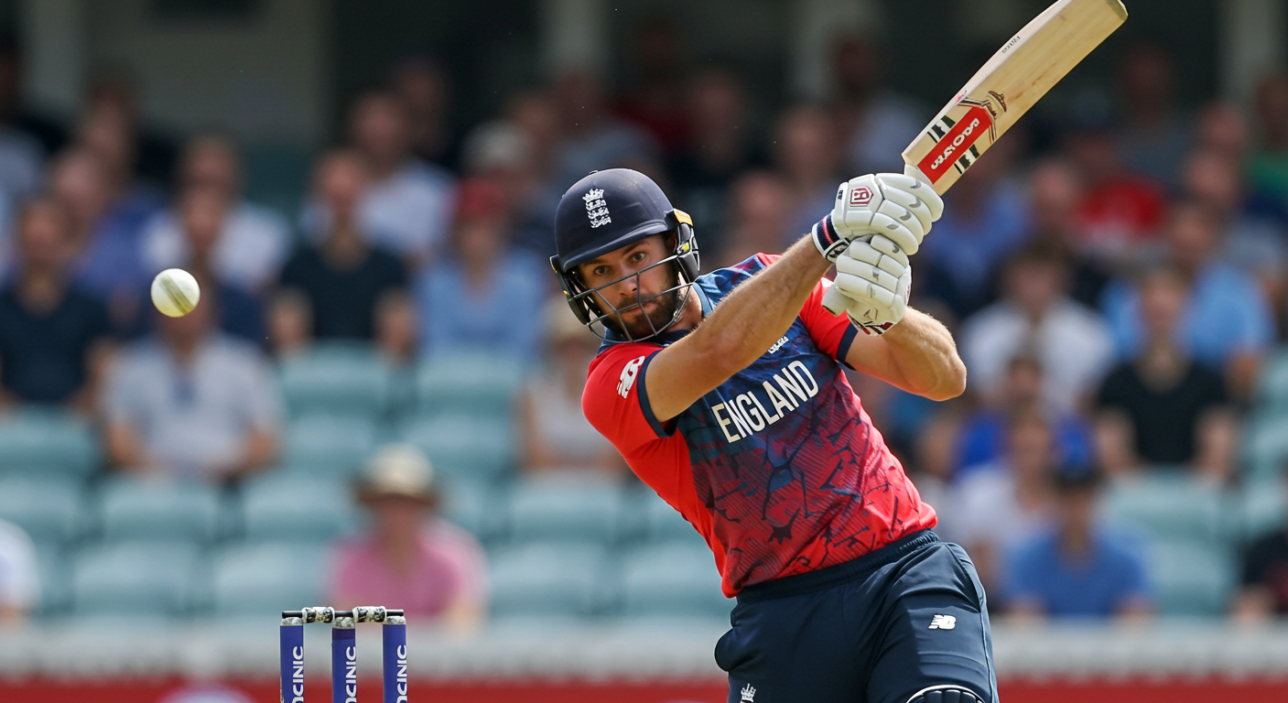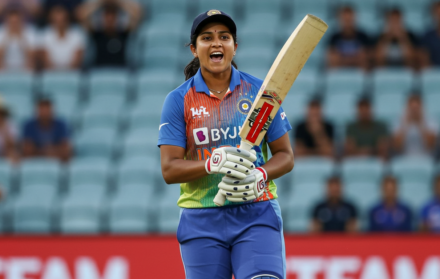
T20 Stats That Reveal the True Gamechangers
T20 cricket often feels like chaos — rapid fire overs, explosive batting, and momentum shifting with every ball. But beneath the entertainment lies an ocean of data. Numbers in this format aren’t just footnotes; they’re the clues that separate performers from match-winners. While the highlights may favour the six-hitters and wicket-takers, it’s the hidden stats that often tell the truer story.
T20 is too short to recover from poor decisions or wasted deliveries. Every ball matters, and players who make the most of those limited opportunities often prove to be the real difference-makers. It’s not always the top run-scorer or leading wicket-taker who changes games — it’s the one who hits at the right moment, bowls the pressure over, or makes the impossible seem routine in the field.
This article dives into the T20 stats that go beyond the obvious — the figures that highlight clutch performers, unsung heroes, and impact players who quietly shape results. From economy rates under pressure to strike rates in specific overs, we’re unpacking the numbers that truly define what winning looks like in cricket’s fastest format.
1. Death Over Economy: The Hidden Currency of Bowling Value

Wickets are great, but in T20 cricket, sometimes the most valuable bowler is the one who simply doesn’t go for runs — especially in overs 16 to 20. Death bowling is a pressure cooker, where one misstep can cost a match. That’s why bowlers with low economy rates at the death are prized assets, even if they aren’t leading the wicket charts.
An economy under 8 in the final four overs is elite. Bowlers like Jasprit Bumrah, Mustafizur Rahman, and Dwayne Bravo (in his prime) became match-winners because they mastered this art. Their variations, execution, and nerves under pressure saved 15–20 runs regularly — which, in T20 terms, is enormous.
Interestingly, some bowlers have ordinary overall numbers, but shine specifically in death overs. This is where targeted T20 stats provide crucial insight. Coaches and captains build entire strategies around bowlers who can own this phase — protecting them early so they’re fresh when it matters most.
When the heat is on and the ball is flying, it’s the death over specialists who often have the final say. And the stats prove it — they may not grab headlines, but they win matches.
2. Strike Rate in Overs 7–15: The Mid-Game Movers
Powerplays and death overs dominate attention in T20s, but often the decisive phase is the middle — overs 7 to 15. This is where momentum can be built or lost. Batters who can accelerate here without reckless risk are gold. It’s no coincidence that players like Suryakumar Yadav and Glenn Phillips consistently post strike rates over 140 in this phase.
Middle overs are tricky. Spinners usually come on, fields spread wider, and captains squeeze singles to frustrate batters. A player who maintains a high strike rate without losing their wicket puts huge pressure back on the bowling side. They also set up the death overs perfectly for a team to launch.
Many batting stats highlight overall strike rates, but digging deeper into middle-over numbers reveals the real gamechangers. Some openers shine early but slow down dramatically once the field spreads. Others, who might not start with fireworks, become unstoppable once set.
Understanding these finer details through T20 stats shows why certain players are consistently selected in leagues and national sides — not for explosive starts alone, but for their ability to control and accelerate through cricket’s most tactical period.
3. Dot Ball Percentage: Building Pressure the Quiet Way
Sixes win matches, but dot balls build collapses. Every delivery that doesn’t concede a run cranks up the pressure — especially in a format where batters are desperate to keep the scoreboard ticking. Bowlers with high dot ball percentages are often the unsung heroes of T20 cricket.
While raw economy rate tells part of the story, dot ball percentage offers deeper insight. A bowler may concede a couple of boundaries but if they manage four dot balls in the over, the pressure remains. Conversely, even an economical over filled with easy singles lets a batting side breathe.
Spinners like Rashid Khan and Sunil Narine thrive on dot balls in the middle overs, while pacers like Bhuvneshwar Kumar squeeze the powerplay with miserly dot rates. The ability to ‘starve’ a batter creates impatience — leading to riskier shots and more wickets.
Among the lesser discussed but vital T20 stats, dot ball percentage consistently correlates with match-winning spells. It’s not always about the wickets you take — it’s often about the frustration you build, until the batters implode on their own.
4. Boundary Percentage vs Dot Ball Percentage: The Balance of a Great Inning

Not all quick scoring innings are created equal. A batter who clears the fence but faces too many dot balls can still put their side under pressure. That’s why elite T20 innings often show a balance between boundary hitting and strike rotation — something revealed when you look at boundary percentage alongside dot ball percentage.
Players like Virat Kohli and Jos Buttler excel because they can score boundaries regularly without getting bogged down. They hit fours and sixes consistently, but they also keep picking up ones and twos, ensuring the run rate never flatlines. This reduces pressure at the other end and prevents stagnant periods.
T20 stats that chart this balance are invaluable for coaches and analysts. A batter with a high boundary percentage but also a high dot ball percentage might seem explosive, but they’re risky if the boundary options dry up. Meanwhile, a player who combines boundary hitting with minimal dot balls becomes a nightmare to contain.
It’s not just about blasting sixes. It’s about keeping the momentum alive from ball one to ball twenty — and the best innings always reflect that delicate statistical balance.
5. Bowling Strike Rate: Wickets, Not Just Containment
In T20 cricket, economy is important — but sometimes, taking wickets matters even more. Bowling strike rate, which measures the number of balls bowled per wicket taken, often provides a clearer picture of impact than economy alone. After all, a wicket is the ultimate pressure builder.
Fast bowlers like Anrich Nortje and spinners like Wanindu Hasaranga have built reputations not just by keeping runs down, but by striking regularly. Breaking partnerships early, especially in the powerplay or middle overs, prevents teams from building the momentum needed for a late-innings explosion.
High-impact bowlers often have middling economy rates but outstanding strike rates, meaning they might go for the occasional boundary but deliver game-turning breakthroughs consistently. Captains know that a few extra runs are a fair price for breaking the back of a chase or stopping a surge.
Among the most predictive T20 stats for identifying matchwinners, bowling strike rate stands out. Containment can keep you in the game, but it’s wickets that truly swing it.
6. Fielding Impact: Run Outs, Catches, and Direct Hits
It’s easy to overlook fielding in a format obsessed with strike rates and death bowling. Yet sharp fielding often determines tight T20 games. One spectacular catch, one run-out against the run of play, or one boundary saved can shift momentum dramatically.
Metrics like catches per match and direct hit success rates are becoming increasingly important. Players like David Miller, Ravindra Jadeja, and Glenn Maxwell aren’t just valuable with bat or ball — they’re fielding gamechangers. Their presence turns singles into dots, twos into ones, and half-chances into dismissals.
Many modern teams now pick fielders as strategically as they do bowlers or finishers. Having a world-class inner ring fielder or a safe pair of hands at long-on adds enormous hidden value — especially when the margins are so tight.
T20 stats are evolving to capture fielding contributions more precisely, using expected runs saved and fielding efficiency rates. These numbers may not top traditional scorecards, but they’re crucial when evaluating who genuinely influences results in the fastest format of the game.
7. Powerplay Performance: The Forgotten Game-Changer

Everyone talks about finishing strong, but matches are often won or lost in the first six overs. Whether it’s with bat or ball, performances in the powerplay set the foundation for the rest of the innings. Powerplay averages and strike rates — for both batters and bowlers — offer insight into who seizes the early momentum.
Openers who can blast 50 in the first six overs without losing wickets give their sides a huge advantage. Conversely, a team that loses two or three wickets early almost always struggles to recover. Bowlers who excel in the powerplay, such as Trent Boult or Mohammad Amir, shape matches with early swing and aggression.
T20 stats that focus specifically on powerplay phases — runs per over, balls per boundary, wickets taken — reveal more about a player’s impact than overall numbers alone. Some players are specialists in the early overs, consistently winning key battles before the chaos of the middle and death stages.
Recognising the importance of powerplay stats gives teams an edge in selection, planning, and in-game decision-making. It reminds everyone that fast starts often win fast games.
8. Impact per Balls Faced or Bowled: Efficiency Over Volume
In T20 cricket, a player’s influence isn’t about how much time they spend on the field — it’s about what they do with the balls they get. Batters who score 40 off 20 balls often change a game more than those who grind 60 off 50. Similarly, bowlers who strike in their first over can have a greater impact than those who bowl a tidy but wicketless spell.
This is where advanced T20 stats like “impact per ball” come into play. These metrics look at a player’s influence relative to their opportunities, not just their aggregate runs or wickets. It rewards efficiency, intent, and the ability to shape outcomes in limited time.
Players like Andre Russell epitomise this model. He might face just 10 balls, but if he scores 30 runs, he swings the match. Bowlers like Rashid Khan often bowl short, sharp spells where one wicket completely changes the pressure dynamics.
Traditional averages and totals sometimes hide this brilliance. But newer T20 stats reveal that in a sprint format, it’s not about lasting longest — it’s about making every moment count.
9. Pressure Index: Performing When It Matters Most
Not all runs and wickets are created equal. Scoring a quick 30 when the team is 180 for 2 is very different to scoring 30 under scoreboard pressure when early wickets have fallen. Similarly, taking a wicket in a low-stakes over doesn’t carry the same weight as dismissing a set batter at a critical juncture.
Enter pressure index metrics — a developing field of T20 stats that evaluates performance contextually. They assess how players perform in high-pressure moments: chases under lights, finals, super overs, or collapses.
Players like MS Dhoni built reputations on excelling when pressure peaked. Others, despite strong overall numbers, falter when stakes are highest. Pressure index analysis is helping franchises and national teams spot players who thrive under fire — and separate them from those who accumulate runs or wickets without match-defining impact.
It’s not enough to perform. It’s about when and how you perform. Understanding pressure stats gives a clearer picture of who the true match-winners are in T20 cricket’s chaotic landscape.
Conclusion: How T20 Stats Uncover Cricket’s True Influencers

In a format that moves at breakneck speed, raw numbers often fail to tell the full story. That’s why digging into advanced T20 stats is so essential for teams, selectors, and fans who want to understand what really changes matches. It’s not just about who scores the most runs or takes the most wickets — it’s about who delivers in the moments that matter.
Metrics like dot ball percentage, death over economy, powerplay performance, and pressure index reveal the hidden heroes who swing games in their team’s favour. They highlight the players who make the most of every opportunity, who perform under the fiercest scrutiny, and who understand the subtle rhythms of a format designed for chaos.
As T20 cricket evolves, so too must the way we analyse it. Looking deeper at these nuanced indicators not only enhances our appreciation of the players but also reshapes strategies, scouting, and recruitment across leagues and national sides.
In the end, T20 cricket isn’t won on highlights alone. It’s won by those who consistently manipulate the fine margins — and the smartest reading of T20 stats is what brings those hidden margins into the light.





